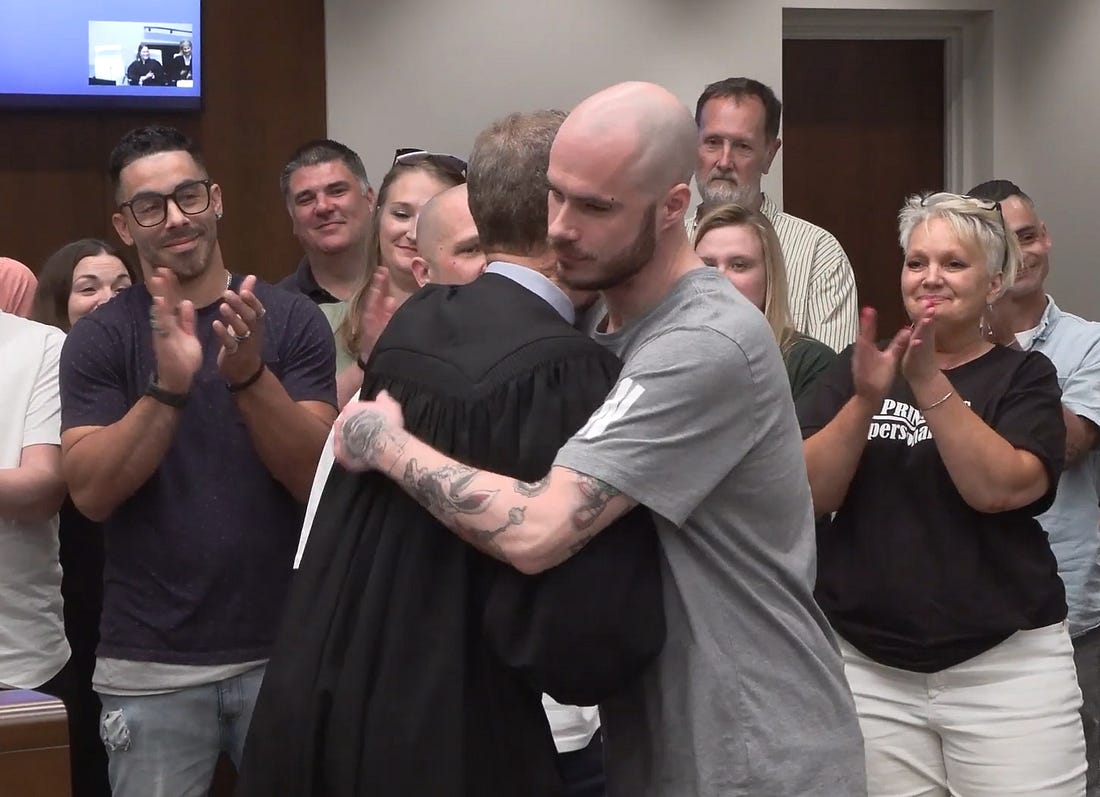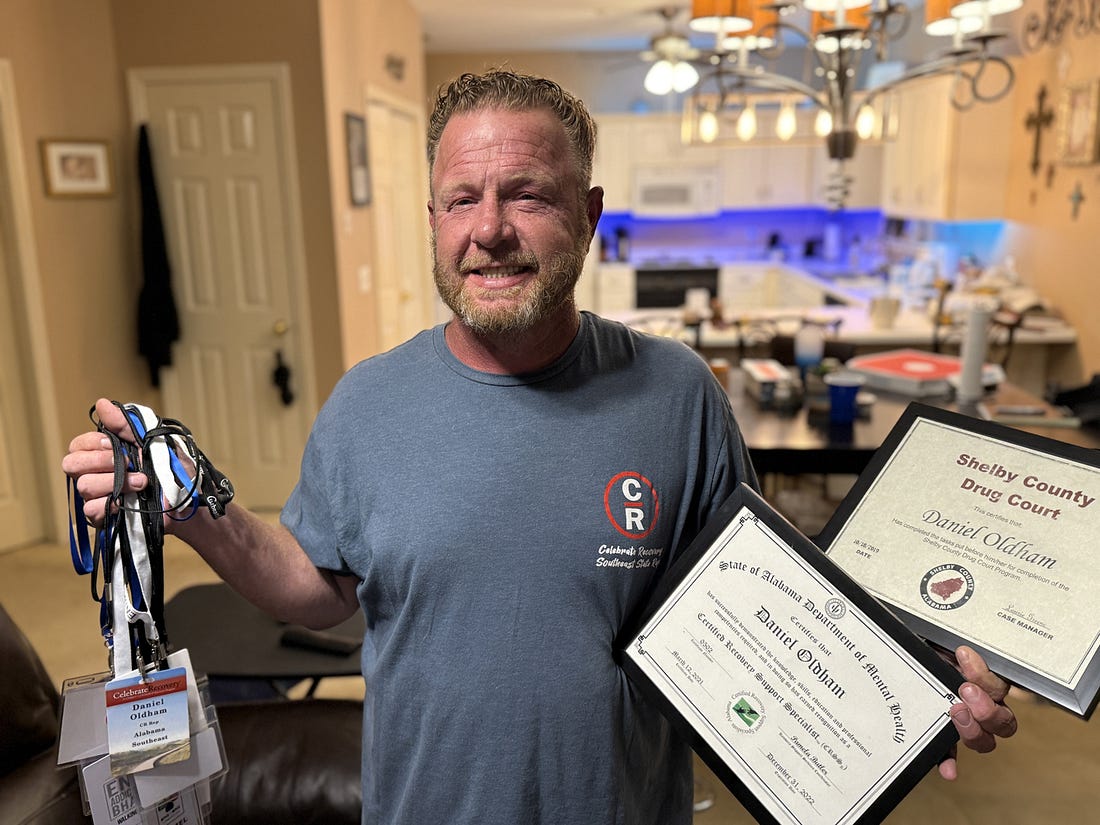|
 |
Drug Courts Save Lives. That May Not Save Them From Trump.
An Alabama man’s recovery story shows what the program can do—and what could be lost.
 |
Helena, Alabama
DANIEL OLDHAM WAS STANDING in a holding room inside a Birmingham-area jail, waiting for a judge to appear on the video monitor and anticipating what he assumed would be one of the worst days of his life.
It turned out to be one of the best.
It was April 2018. Police had arrested Oldham three days earlier for drug possession—a felony charge of which he was guilty, and for which he was likely to spend at least several months in prison. It was the first time Oldham had faced criminal charges, he told me in a recent interview, even though he was nearly 40 and had been taking illicit substances ever since he was in his early teens. He had learned to use and sell drugs from close family members whose own lives were lived in the world of addiction.
But before the hearing began, Oldham learned that he had another option. The state of Alabama was willing to send him to “drug treatment court,” an alternative to standard criminal proceedings that was available to first-time, nonviolent drug offenders. The accused who go to these courts agree to enter into recovery and find work and housing, all under the watchful eye of a judge who serves as mentor, nurturer, and enforcer.
That sounded better than jail time, so Oldham said yes. He spent the next eighteen months meeting program requirements: taking drug tests three times a week and appearing before a judge once a week, all while logging meetings and activities to show he was participating in recovery and generally getting his life in order. As he was approaching the end of those eighteen months, he stood in a wood-paneled law library downtown to offer a “testimony” about his journey—how he had landed work as a painter and had found faith in a nearby church, and how his long-term plan was to help others overcome their substance-abuse disorders.
“When I got in there,” Oldham told me. “I just got a heart for helping people.”
Today, six years out of the program, Oldham is doing just that. He leads a Christian-based recovery group that he started in his church and speaks to gatherings across the greater Birmingham area, as part of his work as a certified recovery-support specialist. His painting business is going well, he says, and in 2021 he married a woman who was also in recovery. They recently bought a house in a quiet, middle-class Birmingham suburb, not far from the site of the arrest that first got him to drug court.
The story of how Oldham turned around his life is, like all such stories, a complex one, rooted in everything from the strengths of his personality to some episodes of good fortune—which, he believes, was the work of God. But Oldham says he would not be around today if not for the drug court, which was one of hundreds that have popped up across the country over the last thirty-five years.
They are part of what is widely considered one of the more promising initiatives to combat substance abuse, and they have benefited from substantial federal support. But now that support is in jeopardy, because the key agency administering it is being ripped to shreds by the Trump administration.
THAT AGENCY IS SAMHSA, the Substance Abuse and Mental Health Services Administration, which Congress created in 1992. SAMHSA’s primary job is doling out grants to states, local governments, and independent nonprofits, though it handles some other projects like overseeing the ‘988’ suicide and crisis line, and conducting the gold-standard national survey on substance abuse.
With an overall budget of just $9 billion last year, it represents barely a blip on the landscape of federal spending. But it sits within the Department of Health and Human Services, and like so many other divisions in that cabinet department, SAMHSA has taken heavy blows in the form of firings and forced resignations.
The precise toll is not clear because the administration has not provided a full accounting of who’s gone and who’s left—not to reporters like me, not even to members of Congress with oversight over the agency. But the best available estimate, which two House Democrats and a government union have put together with crowdsourcing, suggest SAMHSA today has fewer than half the employees it did when Trump took office.¹
That estimate includes people who lost their jobs in a round of October layoffs now on hold while courts consider whether the dismissals were legal. But HHS Secretary Robert F. Kennedy has openly declared his intention to eliminate SAMHSA entirely, as part of a proposal to collapse agencies like it into a single “Administration for a Healthy America” that will operate with fewer staff and resources—all in the name of efficiency, which is also how his department is justifying the cuts to date.
